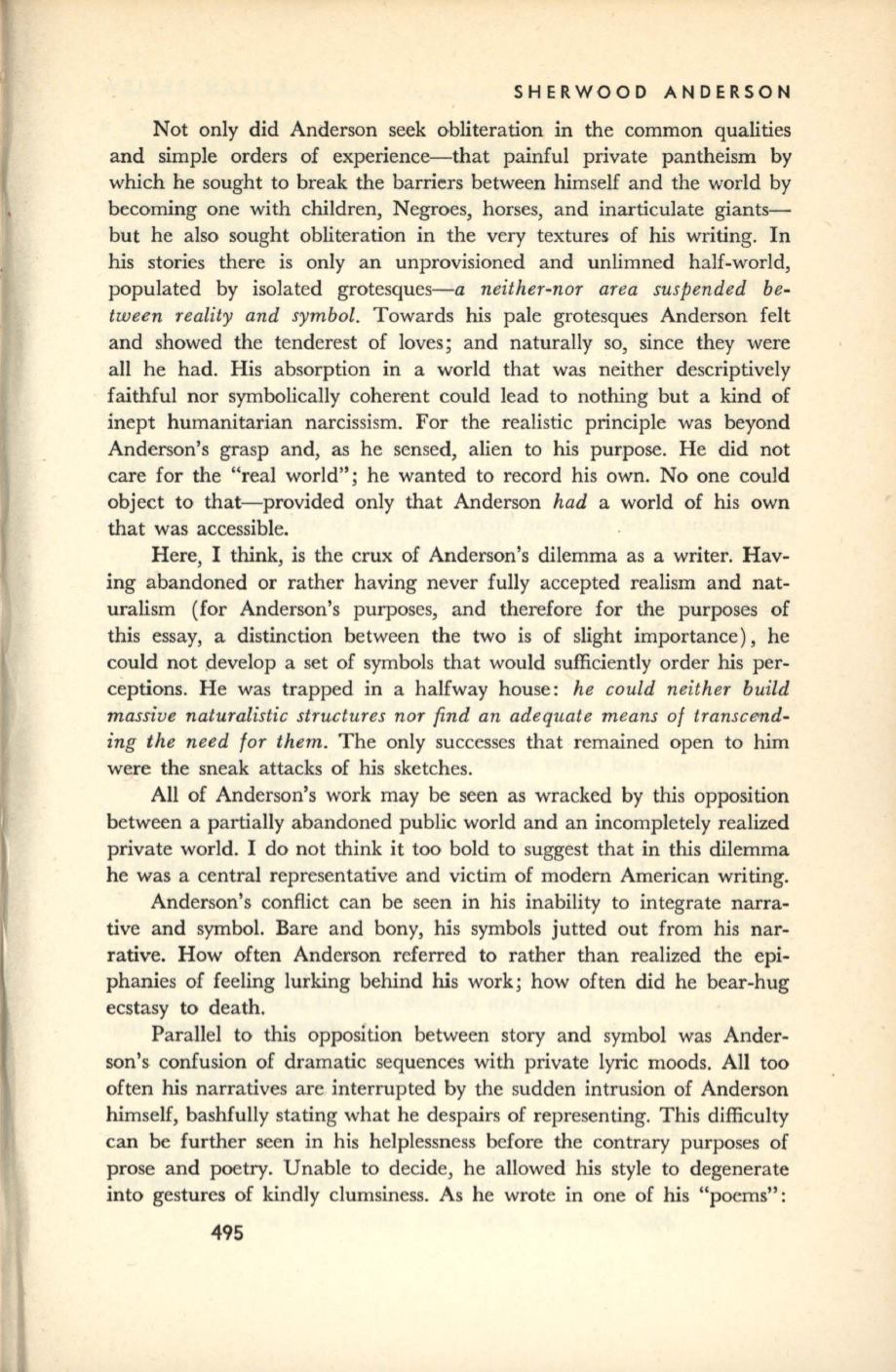
SHERWOOD ANDERSON
Not only did Anderson seek obliteration in the common qualities
and simple orders of experience-that painful private pantheism by
which he sought to break the barriers between himself and the world by
becoming one with children, Negroes, horses, and inarticulate giants–
but he also sought obliteration in the very textures of his writing. In
his stories there is only an unprovisioned and unlimned half-world,
populated by isolated grotesques-a
neither-nor area suspended be–
tween reality and symbol.
Towards his pale grotesques Anderson felt
and showed the tenderest of loves; and naturally so, since they were
all he had. His absorption in a world that was neither descriptively
faithful nor symbolically coherent could lead to nothing but a kind of
inept humanitarian narcissism. For the realistic principle was beyond
Anderson's grasp and, as he sensed, alien to his purpose. He did not
care for the "real world"; he wanted to record his own. No one could
object to that-provided only that Anderson
had
a world of his own
that was accessible.
Here, I think, is the crux of Anderson's dilemma as a writer. Hav–
ing abandoned or rather having never fully accepted realism and nat–
uralism (for Anderson's purposes, and therefore for the purposes of
this essay, a distinction between the two is of slight importance), he
could not develop a set of symbols that would sufficiently order his per–
ceptions. He was trapped in a halfway house:
he could neither build
massive naturalistic structures nor find an adequate means of transce<nd–
ing the need for them.
The only successes that remained open to him
were the sneak attacks of his sketches.
All of Anderson's work may be seen as wracked by this opposition
between a partially abandoned public world and an incompletely realized
private world. I do not think it too bold to suggest that in this dilemma
he was a central representative and victim of modern American writing.
Anderson's conflict can be seen in his inability to integrate narra–
tive and symbol. Bare and bony, his symbols jutted out from his nar–
rative. How often Anderson referred to rather than realized the epi–
phanies of feeling lurking behind his work; how often did he bear-hug
ecstasy to death.
Parallel to this opposition between story and symbol was Ander–
son's confusion of dramatic sequences with private lyric moods. All too
often his narratives are interrupted by the sudden intrusion of Anderson
himself, bashfully stating what he despairs of representing. This difficulty
can be further seen in his helplessness before the contrary purposes of
prose and poetry. Unable to decide, he allowed his style to degenerate
into gestures of kindly clumsiness. As he wrote in one of his "poems":
495


